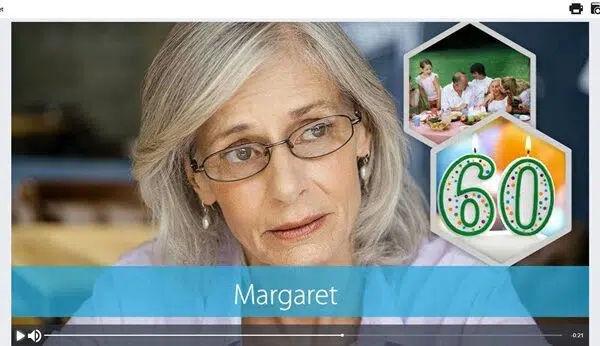Shareable Content Object Reference Model,” or “SCORM,” is an established collection of technical standards for e-learning software. First released in the year 2000, it has become the most common content standard in the e-learning industry, helping standardize content among the many developers involved in e-learning.
Oddly, however, many trainers’ understanding of SCORM is incomplete, making it difficult for them to make the best decisions on formatting their training modules. Is SCORM still necessary in the age of YouTube and social media? Should sales trainers understand it anyway for reference? Here are some of the important things you should know about the standard, its history, its pros and cons, and where it fits in with today’s sales training methodologies.
SCORM Was Developed in Response to a Real Need
The SCORM standard was created for the purpose of standardizing e-learning specs, specifically to answer the question of, “How can training developers simplify the process of integrating e-learning content with different tools and learning systems?” The new standard offered technical specifications for developers so that everyone could work with essentially the same blueprints.
SCORM answered e-learning developers’ questions about how various learning management systems should take in and present content, how assessment vehicles should be scored, and how details like bookmarking could be exchanged between an individual course and a learning management system.
The idea was that SCORM would create a framework for course content, and consequently, learning platforms and course authoring tools developed specifically to be SCORM compliant. That was the idea, but compliance wasn’t always clear-cut.
For example, “compliant” products may have been compliant with version 1.2, or with SCORM 2004. Compliance only requires that a product handles basic specs of the standard, and not optional elements. So, while it solved some specification problems, it ended up introducing others. Therefore, if you’re discussing products and their SCORM compliance, it’s essential that you ask exactly which version of the standard the product complies with and understand what that means.
Advantages and Disadvantages of SCORM
SCORM offers advantages and disadvantages.
Among its advantages are:
- It’s designed to make e-learning content more interactive and engaging, which makes content more likely to be completed and retained.
- You can control how long a learner spends on a module before it’s marked “complete.” This is good for designing courses of specified duration, which is required for some accreditation bodies.
- Course and assessment content can be packaged together. Therefore, if your course includes a final exam, it can be placed at the end of the content and scored, with score data delivered to your learning management system.
- Theoretically, SCORM should make it easier for you to migrate course content to a different learning management system should you need to do so.
But SCORM has some disadvantages too:
- The best authoring tools for the standards can be expensive, so you can make quite an investment even if only a couple of your trainers are involved in course creation. There are some cloud-hosted authoring tools available now that work well for instructional design teams, however.
- Some authoring tools are challenging to learn, which may make a training investment necessary for your course designers.
- A lot of SCORM content has been developed in Flash, which can cause problems with Apple devices.
- New standards (like Tin Can) are emerging, and could gain prominence due to advantages they offer.
- As a legacy e-learning standard, SCORM may feel clunky to newer developers.
The Right Learning Management System Is Flexible Concerning SCORM
The learning management system you choose is as important as the choice of using SCORM or not. That’s because the best learning management systems are able to manage SCORM-compliant content and other types of content, freeing your training designers from thinking about technical nuts and bolts of delivering the learning content. Choose your learning management system with care, and you should have an easier time, particularly if your learning development team includes both SCORM-literate and newer training designers who may not be as familiar with it.
For Now, SCORM Is Embedded in e-learning
There is plenty of chatter about the decline of SCORM, with some talking as if it’s already a thing of the past. Indeed, the standard is limited in certain ways, and these limitations become clearer as consumer technology races ahead. For example, one reason the Tin Can API has captured so much attention recently is because of its ability to track mobile learning and offline learning. But SCORM is embedded enough that training designers aren’t jettisoning it altogether to start new with something else. Therefore, it’s important to monitor what’s going on with it and with other design standards.
Is SCORM Necessary for Your Sales Training?
You and your team are the only ones who can determine if sticking with SCORM is worthwhile. You have to answer key questions about the type of sales training you want to deliver, and what its purposes are.
Companies that need to deliver internal sales training that is, for example, focused on compliance, can often get excellent, cost-effective results with video content, perhaps some traditional PowerPoint content, and an exam at the end. Developing gamified content can be done via mash-up of existing interactive games and SCORM, but it’s not the most straightforward process. Perhaps the best determinant of the role SCORM will play in your organization going forward is how big a role it has played thus far.
In the “olden days” of 2000, standards for online content had yet to emerge and establish dominance, and many proprietary standards existed. Things have changed, however, and most platforms support multiple formats of video, text, audio, and other types of content. SCORM played an important role in bringing e-learning into “prime time,” and it still plays a role for many organizations.
However, you owe it to your organization to know all the possibilities, their advantages, and disadvantages. We invite and encourage you to get in touch with us and learn more about our areas of training expertise.





